Deserts: An Overview
Deserts are arid regions characterized by low precipitation levels, high temperatures, and sparse vegetation. They cover approximately one-fifth of the Earth's land surface and can be found on every continent.
Characteristics of Deserts
Deserts are typically defined by their unique characteristics:
- Low Precipitation: Deserts receive less than 250 millimeters (10 inches) of precipitation annually, resulting in water scarcity.
- High Temperatures: During the day, desert temperatures can soar to extreme highs, while at night, they can plummet to very low levels due to the lack of humidity.
- Sparse Vegetation: Desert plants have adapted to conserve water and withstand the harsh environmental conditions, leading to a limited diversity of plant species.
- Unique Animal Adaptations: Desert animals have evolved various adaptations to survive in the harsh desert environment, such as nocturnal behavior, efficient water conservation, and heat tolerance.
Types of Deserts
Deserts can be classified into four main types:
- Hot Deserts: Characterized by extremely high temperatures, examples include the Sahara Desert in Africa and the Arabian Desert in the Middle East.
- Cold Deserts: Found at higher latitudes and elevations, with lower temperatures and sparse vegetation, examples include the Gobi Desert in Asia and the Great Basin Desert in North America.
- Coastal Deserts: Located near coastal regions, with moderate temperatures and low precipitation, examples include the Atacama Desert in South America and the Namib Desert in Africa.
- Polar Deserts: Found in polar regions, characterized by extremely low temperatures and limited precipitation, examples include the Antarctic Desert and the Arctic Desert.
Human Impact on Deserts
Human activities, such as urbanization, agriculture, and resource extraction, have significantly impacted desert ecosystems. Overgrazing, deforestation, and water extraction have led to desertification in many regions, causing soil degradation and loss of biodiversity.
Study Guide
When studying deserts, consider the following key points:
- Describe the unique characteristics of deserts and how they differ from other ecosystems.
- Identify and explain the adaptations of plants and animals in desert environments.
- Compare and contrast the different types of deserts, including their geographical locations and distinct features.
- Analyze the human impact on desert ecosystems and propose potential solutions to mitigate environmental degradation.
[Deserts] Related Worksheets and Study Guides:
.◂Biology Worksheets and Study Guides High School. Invertebrates
Worksheet/Answer key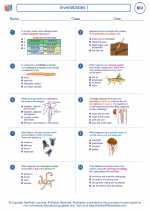 Invertebrates I
Invertebrates I  Worksheet/Answer key
Worksheet/Answer key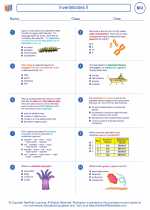 Invertebrates II
Invertebrates II  Worksheet/Answer key
Worksheet/Answer key Invertebrates I
Invertebrates I  Worksheet/Answer key
Worksheet/Answer key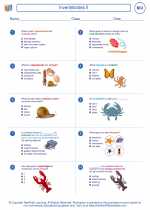 Invertebrates II
Invertebrates II  Worksheet/Answer key
Worksheet/Answer key Invertebrates I
Invertebrates I  Worksheet/Answer key
Worksheet/Answer key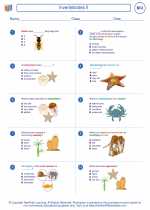 Invertebrates II
Invertebrates II  Vocabulary/Answer key
Vocabulary/Answer key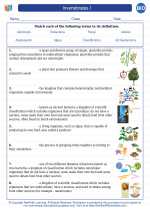 Invertebrates I
Invertebrates I  Vocabulary/Answer key
Vocabulary/Answer key Invertebrates I
Invertebrates I  Vocabulary/Answer key
Vocabulary/Answer key Invertebrates I
Invertebrates I 

 Worksheet/Answer key
Worksheet/Answer key
 Worksheet/Answer key
Worksheet/Answer key
 Worksheet/Answer key
Worksheet/Answer key
 Worksheet/Answer key
Worksheet/Answer key
 Worksheet/Answer key
Worksheet/Answer key
 Vocabulary/Answer key
Vocabulary/Answer key
 Vocabulary/Answer key
Vocabulary/Answer key
 Vocabulary/Answer key
Vocabulary/Answer key

The resources above cover the following skills:
Concepts of Life Science (SC1, SC2, SC3)
The student demonstrates an understanding of the structure, function, behavior, development, life cycles, and diversity of living organisms by describing the structure-function relationship